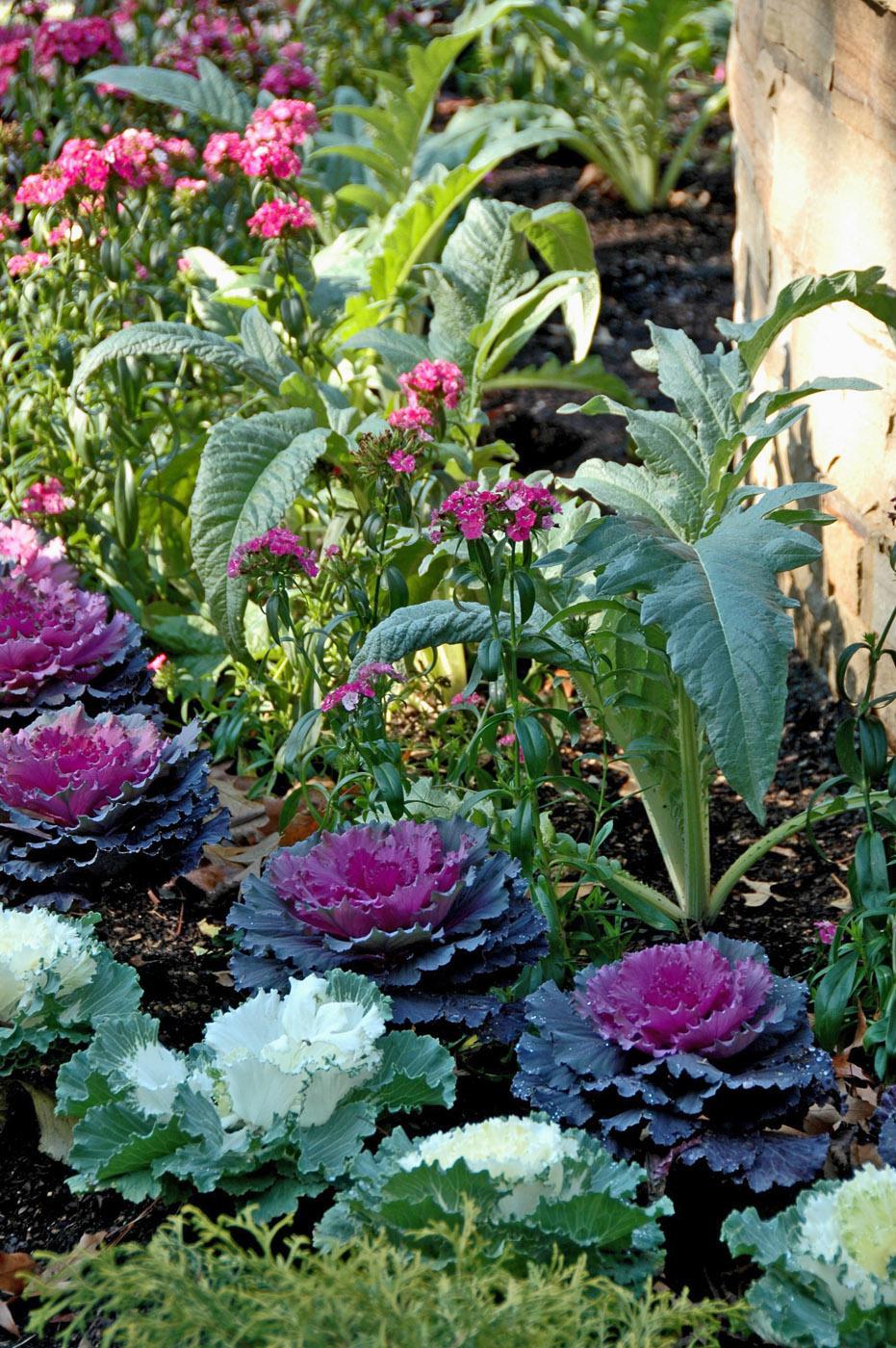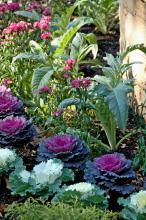Information Possibly Outdated
The information presented on this page was originally released on October 16, 2008. It may not be outdated, but please search our site for more current information. If you plan to quote or reference this information in a publication, please check with the Extension specialist or author before proceeding.
Edible cardoon named Medallion award winner
By Norman Winter
MSU Horticulturist
Central Mississippi Research & Extension Center
The cardoon is a plant the Romans and Greeks ate as a vegetable, but today its popularity is sweeping the South as it is the newest Mississippi Medallion award winner.
Although the ancients ate it, at Mississippi State University's Truck Crops Experiment Station, we use it for its looks. Botanically, cardoon is Cynara cardunculus, and it is related to the globe artichoke.
It is from Morocco, northwest Africa and the Mediterranean, and it is cold hardy through zone 6. It has proven to be a real performer for several years in MSU trials in Crystal Springs. The catalog for one of my favorite nurseries says that cardoon has been chosen by the Royal Horticultural Society as one of the top plants of the last 200 years.
Sometimes plants native to that part of the world don't like Mississippi's heat and humidity, but this plant seems to be quite at home here. Cardoon makes a dramatic statement in the flower border with its long, arching, deeply toothed and soft gray-green foliage. It can easily form a 3-foot-wide clump.
The plant is very attractive and engaging in the cool-season landscape right up until late spring and early summer. You will be amazed around June as the plant reaches its full height, producing 6-foot-tall spikes with thistle-like, blue-violet or purple blooms.
These cardoon blooms are sought after as one of the most incredible cut flowers you'll ever see in the vase. Each plant produces several flowers to use in your arrangements. After blooming, the plant dies to the ground and returns in the fall.
At Jackson's Northpark Mall, cardoon provides color with other cool-season plants like Amazon Rose Magic dianthuses and pansies. At one entrance, it was partnered with yucca for a combination of unique leaf textures and drought tolerance.
I like cardoon as a foliage plant in the ornamental flowerbed, but it could have its place in a large herb or vegetable garden.
Those of you who are into culinary arts or edible landscapes should put this plant at the top of your list. Young, tender stems may be eaten like celery, the young leaves like spinach, and the main root can be sautéed in butter. University of Florida horticulturists suggest that the stems be blanched before harvesting. A growing plant is blanched by tying up the outer branches a foot or so from the top of the plant and piling soil around the plant as it grows. This is meant to turn the stems white and make them tender for eating.
The even-better news for many Mississippians is that while people enjoy eating cardoon, deer do not.
Before running out and grabbing your neighbors' cardoon plants for dinner, be warned that these plants are armed with spines. Besides that, don't steal them when you can find them at your local garden centers. The Internet offers many recipes for this plant, so do your research before cooking and eating.
Cardoon likes deep, fertile soils. Once established, it can take temperatures in the teens, so get it started in the fall. The cool season is a wonderful time to garden, and foliage plants like cardoon make it even more enjoyable.
You can see cardoon October 17 and 18 at the Fall Flower and Garden Fest at MSU's Truck Crops Experiment Station in Crystal Springs. The event hours are 9 a.m. until 2 p.m. each day.



